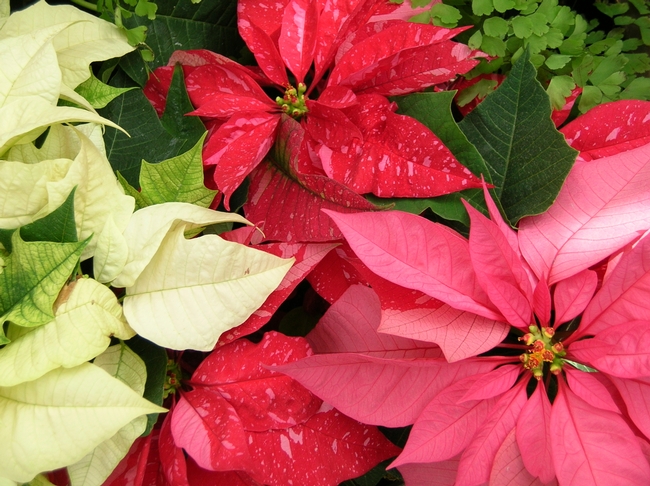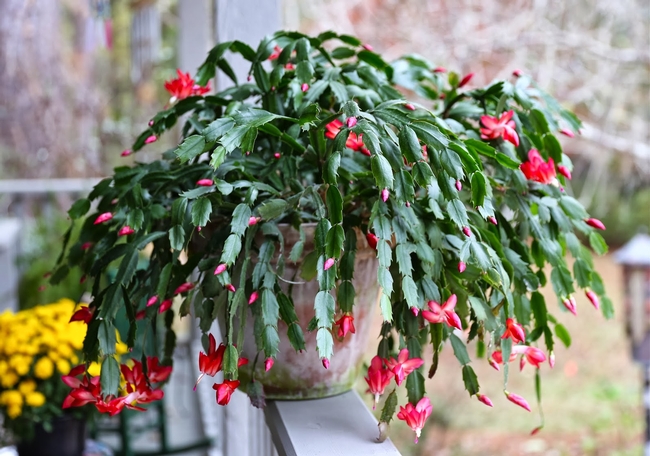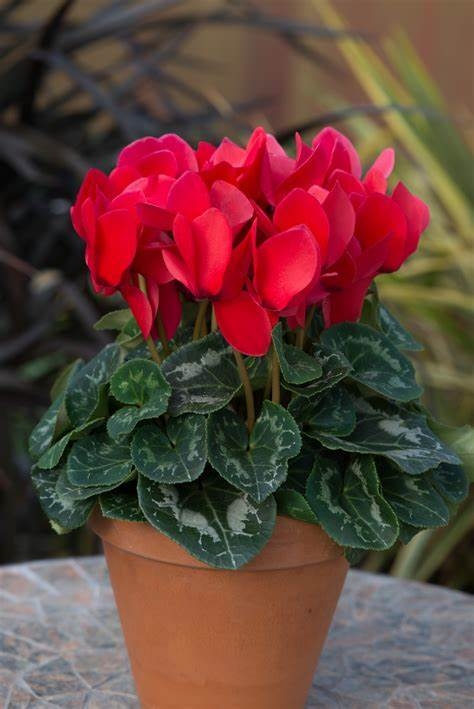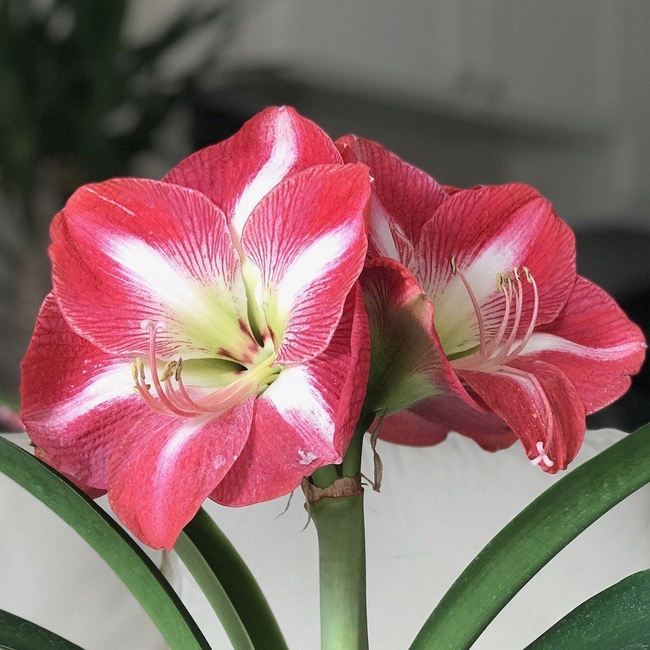Winter is a time when a lot of the color of the outdoor world has faded away. The leaves have fallen and gray skies are becoming more frequent. Winter is also a time of happiness and cheer; a time that you spend with your loved ones. Having festive plants in your home is a great way to brighten the atmosphere and bring a feeling of love, laughter, and joy to your holiday gathering.
While the Christmas tree may be the plant most commonly associated with the holidays, flowers like poinsettias, Christmas cactus, cyclamens, and amaryllis are an equally important part of holiday traditions and are widely available from garden centers this time of the year. Whether you're going all out for the holidays or you like to keep things simple for your festivities, these plants and flowers are sure to add some cheer to your holiday decor. Here are a few tips on keeping your holiday plants healthy and happy all season long.
Poinsettias

The plant you choose should have dark green foliage. Fallen or damaged leaves indicate poor handling or fertilization, lack of water or a root disease problem. The colorful flower bracts (red, pink, white or bicolor pink and white) should be in proportion to the plant and pot size. Little or no pollen should be showing oil the actual flowers (those red or green button-like parts in the center of the colorful bracts).
The key to caring for poinsettias is knowing these colorful plants are tropicals, and that drafts will often cause them to lose leaves. Keep your poinsettia where the daytime temperature ranges from 65 to 70 degrees Fahrenheit, and move it to a spot about 60 degrees at night. Grow your poinsettia by a sunny window, but don't let it touch the glass, where heat or cold can damage it.
Most of all, avoid over-watering. Wait until the soil feels dry before you water, and don't leave water standing in the saucer or in any foil wrapped around the pot. If the leaves wilt, and the soil gets dry to the touch, water your poinsettia right away. But remember: wilting or dropping leaves can also be a sign of over watering. If the soil is soggy when the leaves fall, you've probably watered too much.
Christmas Cactus
To get the most out of a Christmas cactus, purchase plants that have a healthy green color and lots of unopened flowers. Plants purchased that are already in full bloom will not flower as long once you get them home. Despite their common name, Christmas cacti are succulents, and aren't as drought tolerant as you might think. Keep the soil moist, but not soggy, while they're in bloom. If the stems start to look flabby, you're probably over-watering. They do best in a temperatures ranging from 50° to 70°F and in bright light (but not direct sun). If the buds drop, your plant may have been exposed to a draft or sudden temperature change, or you may have let it get too dry.
These cacti also can be grown as houseplants in pots with porous, fertile soil, excellent drainage and bright indirect light. They bloom well when slightly crowded in their pots, and can be propagated by rooting a leaf segment in damp gravel or vermiculite.
When the flowers fade, move your cactus to a sunny window, or put it outdoors for the summer in partial shade. When the temperatures drop in fall, start bringing the plant back in, gradually increasing the time it's indoors to let it adjust to the lower light levels. To grow in the ground or in pots, use a rich, porous soil mixture containing equal parts by volume of coarse sand, peat moss and leaf mold.
Cyclamens
The most important things to know about cyclamen plant care is to give these houseplants bright, indirect light, fresh air, good humidity, and moist soil without keeping the tuber so wet that it rots. Provide high humidity by keeping them on a tray filled with pebbles and a little water. Place plant in an east window or a southern exposure. Day temperatures of 60°F to 65°F and nights at 50° to 55°F are ideal. Do not let temperatures get above 70 degrees or the plant will think it's time to go dormant.
To keep the plant moist, water cyclamen thoroughly when the soil looks and feels dry on the surface, however, avoid watering the leaves or tubers in the center, which may rot if it remains too wet. A safer method is to place each pot in a saucer of water for about five minutes, or until the soil is uniformly moist.
As each flower fades, remove the entire flower stalk from where it attaches to the tuber by giving it a sharp tug. New flowers will emerge from one of the many buds waiting just below the foliage. Cyclamens will bloom near the Christmas season and continue blossoming for two to three months.

Although the amaryllis can be purchased at any stage of development, for many the real fun is growing their own plant from a bulb. Most amaryllis bulbs are sold already potted and with complete growing instructions. Once watering is started, you can expect magnificent blooms of red, pink, white, or orange in four to six weeks.
Enjoy your amaryllis for the maximum time possible by placing it in a location with diffused light and cool indoor temperatures in the 60-degree range. Keep it barely moist. When you water, be careful not to wet the portion of the bulb that sticks above the soil. If you have a large bulb, you may get two or three flowering stalks that bloom over a period of several weeks.